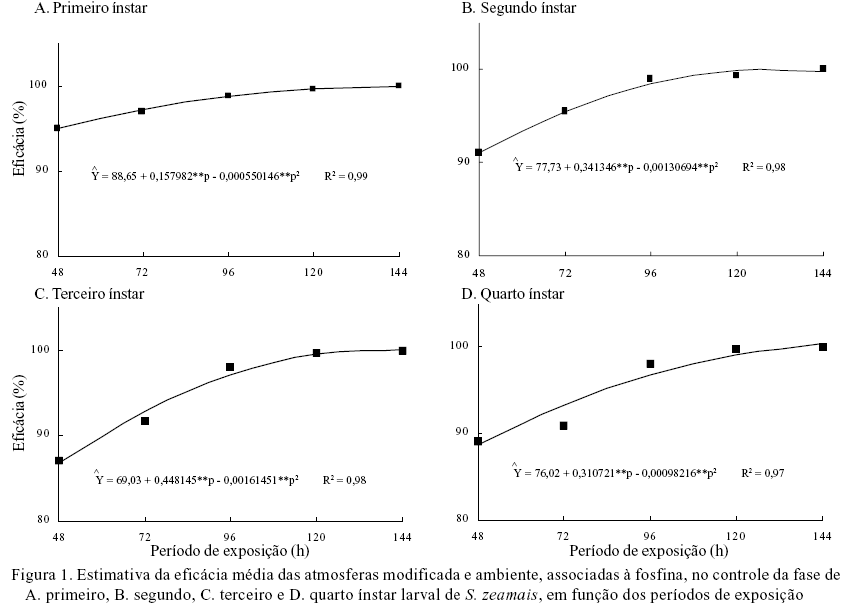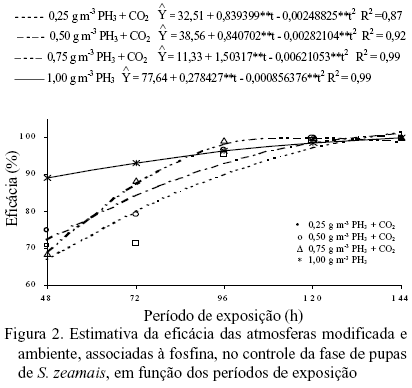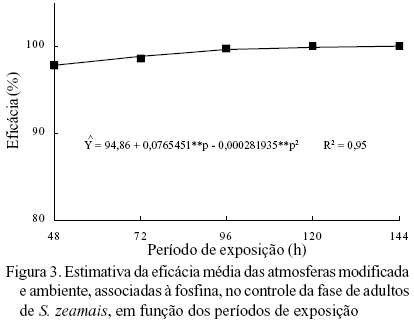The objective of this work was to evaluate the effect of a modified atmosphere (100% of CO2) associated with three phosphine concentrations (0.25, 0.50, and 0.75 g m-3), on the control of different stages of development of the insect Sitophilus zeamais (Motschulsky). It was concluded that, in general, (1) an increase in the exposure period caused an increase in the effectiveness of both the treatments with atmosphere containing 100% of CO2 and atmosphere with ambient air, associated to the phosphine, for all development stages of Sitophilus zeamais; (2) the pupae of Sitophilus zeamais were the ones with the highest tolerance to the treatments used for control, while the eggs and larvae from the first instar were the ones with lesser tolerance; (4) the concentration of 0.75 g m-3 of phosphine associated to the atmosphere containing 100% of CO2, for the exposure period of 120 h, was the minimum necessary to effectively control all development stages of Sitophilus zeamais.
grains storage; modified atmosphere; carbon dioxide; phosphine; Sitophilus zeamais




